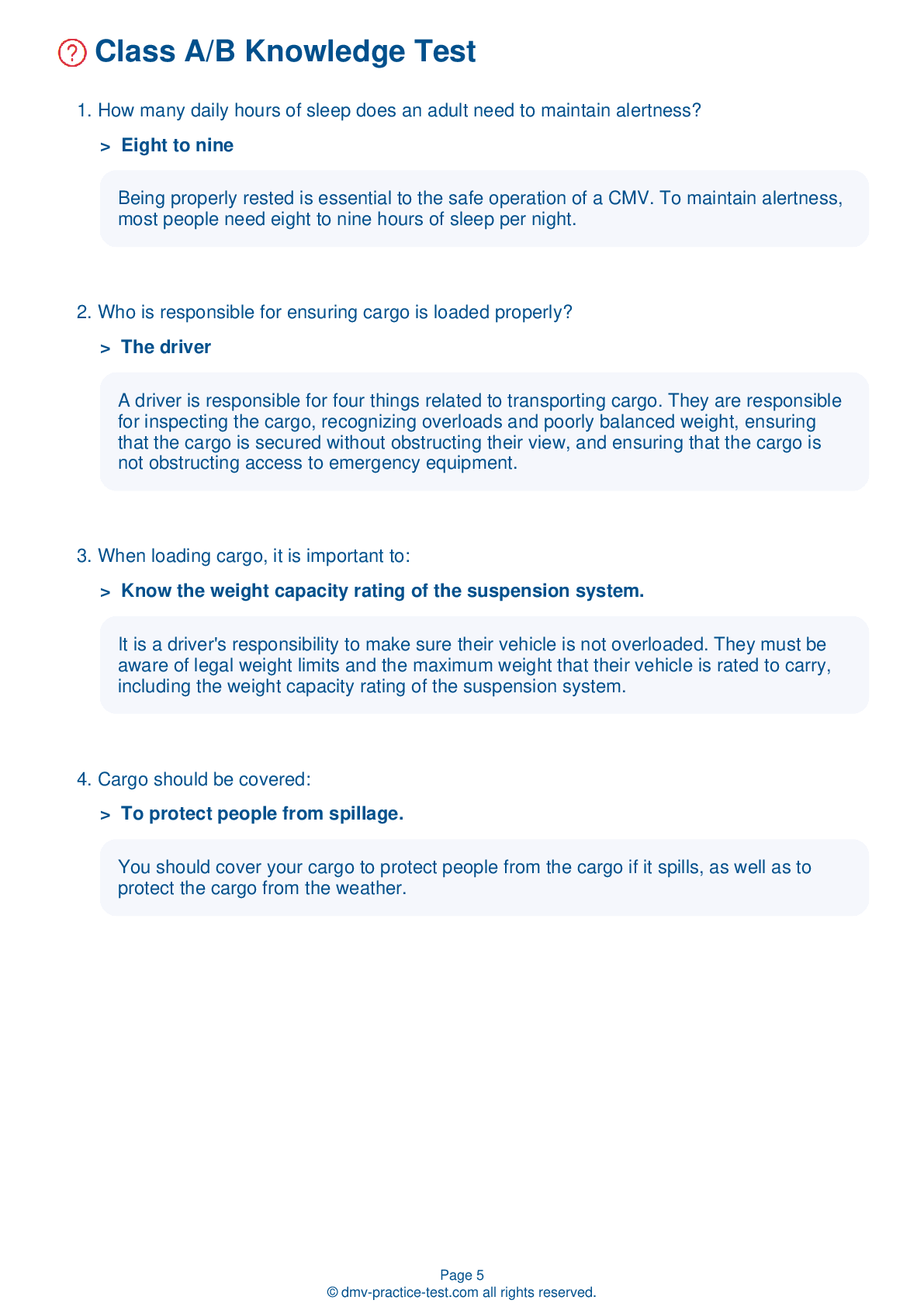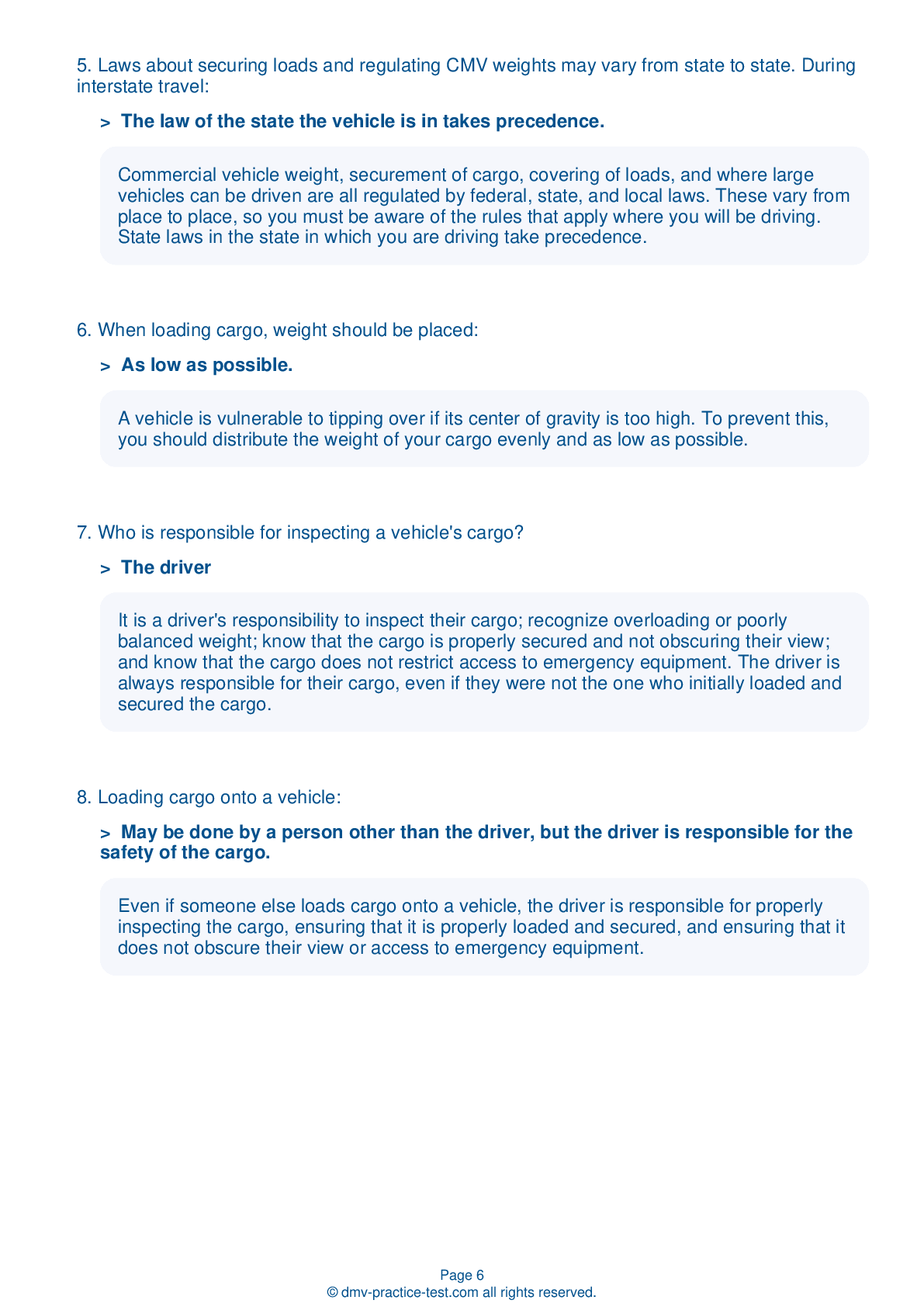Class A Driving Test | Connecticut 2025 #1 Page 2 of 7
Train for FREE online with our Connecticut class A license test. The official exam test consists of several obligatory parts, with all of them checking your knowledge of different blocks of road rules. If you need to obtain a CT CDL class A permit in 2025, practice as much as possible. Free sample tests published on our website will help you check and improve your knowledge and boost your grades. Please bear in mind that CDL class A requirements may vary from state to state.
8 . When parking, you should not use the parking brake if:
If your brakes are hot after coming down a steep grade, you should not use your parking brake when parking. Let your brakes cool before applying the parking brake or risk damaging the brakes.
9 . If asked to sight-side back your vehicle into an alley, you should first:
If you are asked to alley dock, you should first pull past the alley and stop your vehicle in a position that is parallel to the outer boundary. From there, you should back your vehicle entirely into the alley parking area. Your vehicle should be parked in a straight position within the boundaries of the parking space.
10 . Having more than one license can result in a fine of up to:
It is illegal for a person to have more than one license. Violation of this law can be punishable by jail time and/or a fine of up to $5,000.
11 . What is road rage?
Aggressive driving is defined as operating a motor vehicle in a selfish, bold, or pushy manner. Road rage is defined as operating a motor vehicle with the intent of doing harm to others, or the intent of physically assaulting another driver or their vehicle.
12 . If convicted of speeding while operating your personal automobile in a different jurisdiction, you should:
If you are convicted of any kind of traffic violation, in any type of vehicle, you must notify your employer within 30 days. You must also inform your motor vehicle licensing agency of the violation within 30 days if the conviction happened in another jurisdiction. This rule does not apply to parking infractions.
13 . If taking the driving test and the route does not include a railroad crossing, you:
If your on-road driving test route does not include a railroad crossing, you may be asked to explain and demonstrate the proper railroad crossing procedures to the examiner at a simulated location.
14 . Causing a fatality through negligent operation of a CMV can result in loss of a CDL for at least:
A first conviction of causing a fatality through negligent operation of a CMV will result in the loss of your CDL for at least one year. A second conviction will result in loss of the CDL for life.
See the exact questions that will be on the 2025 Connecticut DMV exam.
99.2% of people who use the cheat sheet pass the FIRST TIME
Lillian MCcranie explains how our CDL study guide was helpful in passing the exam and recommends it to everyone.
Cameron tells us how he purchased the CDL exam, and found it to be a useful tool which helped him pass the exam and find a job.



